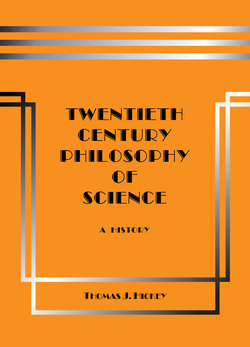Читать книгу Twentieth-Century Philosophy of Science: A History (Third Edition) - Thomas J. Hickey - Страница 103
На сайте Литреса книга снята с продажи.
4.23 The “Best Explanation” Criteria
ОглавлениеAs noted above, Thagard’s cognitive-psychology system ECHO developed specifically for theory selection has identified three nonempirical criteria to maximize the coherence aim. His simulations of past episodes in the history of science indicate that the most important criterion is breadth of explanation, followed by simplicity of explanation, and finally analogy with previously accepted theories. Thagard considers these nonempirical selection criteria as productive of a “best explanation”.
The breadth-of-explanation criterion also suggests Popper’s aim of maximizing information content. In any case there have been successful theories in the history of science, such as Heisenberg’s matrix mechanics and uncertainty relations, for which none of these three characteristics were operative in the acceptance as explanations. And as Feyerabend noted in Against Method in criticizing Popper’s view, Aristotelian dynamics is a general theory of change comprising locomotion, qualitative change, generation and corruption, while Galileo and his successors’ dynamics pertains exclusively to locomotion. Aristotle’s explanations therefore may be said to have greater breadth, but his physics is now known to be less empirically adequate.
Contemporary pragmatists acknowledge only the empirical criterion, the criterion of superior empirical adequacy. They exclude all nonempirical criteria from the aim of science, because while relevant to persuasion to make theories appear “convincing”, they are irrelevant to evidence. Nonempirical criteria are like the psychological criteria that trial lawyers use to select and persuade juries in order to win lawsuits in a court of law, but which are irrelevant to courtroom evidence rules for determining the facts of a case. Such prosecutorial lawyers are like the editors and referees of the peer-reviewed academic literature (sometimes called the “court of science”) who ignore the empirical evidence described in a paper submitted for publication.
But nonempirical criteria are routinely operative in the selection of problems to be addressed and explained. For example the American Economic Association’s Index of Economic Journals indicates that in the years of the Great Depression the number of journal articles concerning the trade cycle fluctuated in close correlation with the national average unemployment rate with a lag of approximately two years.
